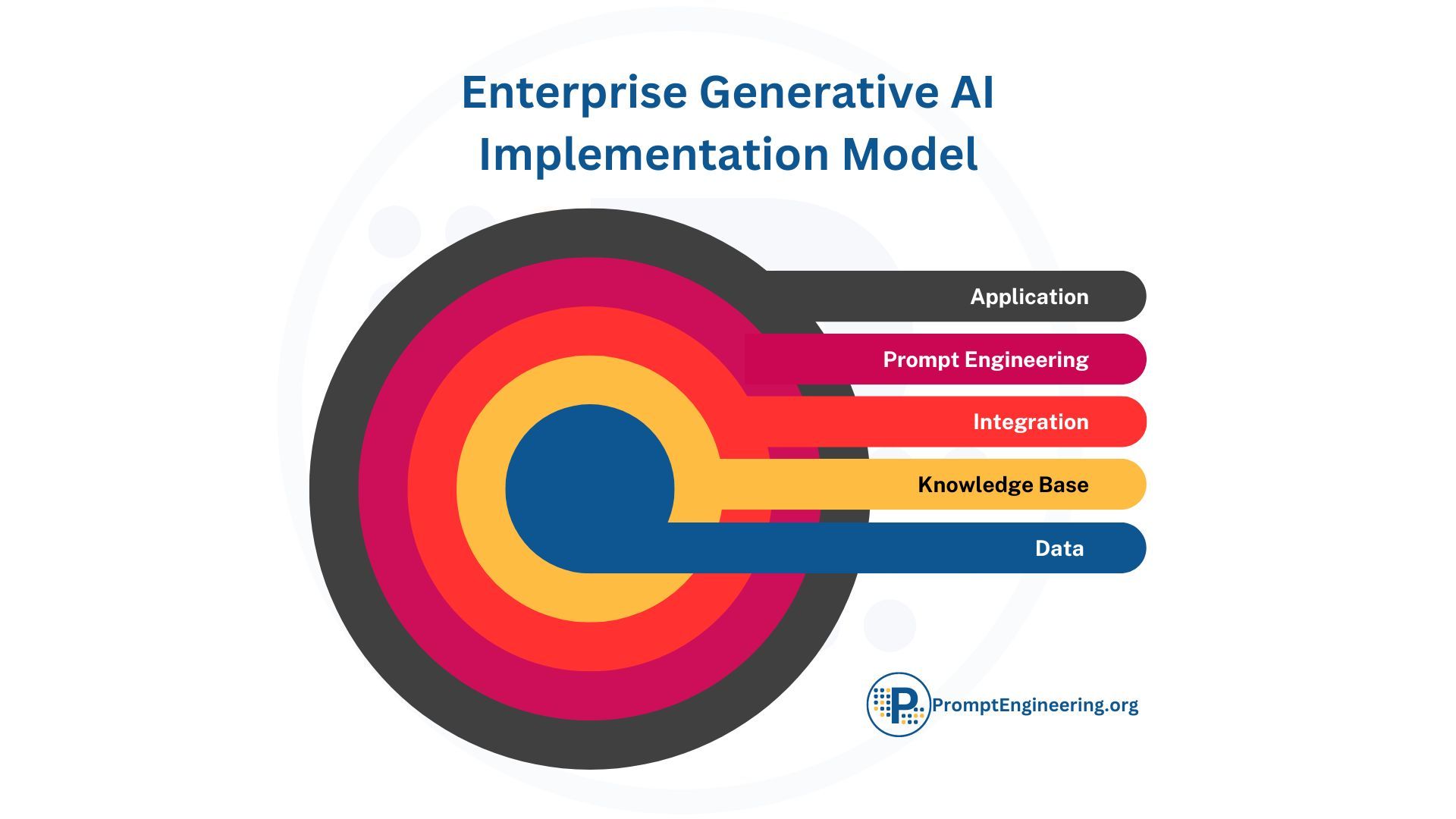Legacy Systems: The Hidden Barrier To Successful AI Adoption

Table of Contents
Data Incompatibility and Integration Challenges
Legacy systems present a major hurdle in AI adoption due to inherent data incompatibility and integration difficulties. Successfully implementing AI requires clean, accessible, and well-structured data – something often lacking with outdated systems.
Data Silos and Data Migration
Legacy systems frequently store data in disparate formats and locations, creating significant data silos. Migrating this data to a format compatible with AI algorithms is a complex and time-consuming process. This often involves significant upfront investment and ongoing maintenance.
- Difficulty in data standardization and cleansing: Data from various legacy systems may use different formats, units, and naming conventions, requiring extensive cleaning and standardization before it can be used for AI model training.
- High cost and resource-intensive migration projects: Migrating large volumes of data from multiple legacy systems can be incredibly expensive and require a dedicated team of data engineers and specialists.
- Potential for data loss or corruption during migration: The migration process itself carries inherent risks of data loss or corruption, requiring meticulous planning and robust data backup strategies.
Lack of API Access and Data Accessibility
Many legacy systems lack the Application Programming Interfaces (APIs) needed for seamless integration with modern AI tools. This limited accessibility directly impacts the ability to feed data into AI models effectively, hindering real-time insights and predictions.
- Need for custom API development, increasing costs and timelines: Developing custom APIs to connect legacy systems with AI platforms adds significant costs and delays to the project timeline.
- Limited real-time data integration capabilities: Without APIs, integrating data in real-time is challenging, limiting the potential of AI applications that require up-to-the-minute data.
- Increased complexity in data preprocessing and feature engineering: The lack of standardized data formats and API access adds significant complexity to the data preprocessing and feature engineering stages, increasing the time and resources required for AI development.
Scalability and Performance Issues
The computational demands of AI algorithms often exceed the capabilities of legacy systems, resulting in significant performance bottlenecks and scalability limitations.
Limited Processing Power and Infrastructure
Legacy systems were often designed for specific, less demanding tasks. They may lack the processing power and infrastructure needed to support the computationally intensive nature of AI algorithms, particularly deep learning models.
- Performance bottlenecks impacting AI model training and deployment: Training complex AI models on limited processing power can lead to significantly longer training times and poor model performance.
- Inability to handle large datasets required for effective AI training: Many AI algorithms require massive datasets for effective training. Legacy systems may lack the storage capacity and processing power to handle such large datasets.
- Need for significant upgrades or replacement of existing infrastructure: Addressing performance issues may necessitate substantial upgrades or even complete replacement of existing infrastructure, representing a considerable financial investment.
Maintaining Legacy Systems While Implementing AI
The ongoing maintenance and support required for legacy systems can divert valuable resources away from AI initiatives, hindering the successful implementation and adoption of AI strategies.
- Increased IT operational costs related to legacy system maintenance: Maintaining outdated systems continues to incur significant costs, diverting funds from AI projects.
- Diversion of skilled IT resources from AI projects: IT staff must allocate time to maintaining legacy systems, drawing resources away from AI development and implementation.
- Potential security vulnerabilities associated with outdated systems: Legacy systems often have outdated security protocols, increasing the risk of security breaches and data loss.
Security and Compliance Concerns
Integrating AI with legacy systems raises significant security and compliance challenges that can compromise sensitive data and lead to legal issues.
Security Risks and Data Breaches
Legacy systems often have outdated security protocols, making them vulnerable to cyberattacks and data breaches. This poses a significant risk to sensitive data used in AI projects.
- Increased risk of unauthorized access to sensitive data: Out-of-date security measures in legacy systems create vulnerabilities, potentially exposing sensitive data used in AI applications.
- Non-compliance with relevant data privacy regulations (GDPR, CCPA, etc.): Legacy systems may not meet current data privacy regulations, exposing organizations to significant fines and legal repercussions.
- Need for significant security upgrades and penetration testing: Addressing security vulnerabilities in legacy systems often requires extensive upgrades and penetration testing, adding to project costs and complexity.
Compliance with Regulations
Integrating AI with legacy systems that don’t comply with industry regulations (e.g., HIPAA, PCI DSS) can result in substantial fines and reputational damage.
- Difficulty in ensuring data privacy and compliance within the AI pipeline: Integrating AI with non-compliant legacy systems makes it challenging to maintain data privacy and regulatory compliance throughout the AI development lifecycle.
- Increased regulatory scrutiny and potential for legal action: Non-compliance can lead to increased regulatory scrutiny and potential legal action, resulting in significant financial and reputational damage.
- Need for comprehensive audits and compliance assessments: Organizations must conduct regular audits and compliance assessments to ensure that their AI systems and legacy integrations meet all relevant regulatory requirements.
Strategies for Overcoming Legacy System Barriers
Several strategies can help organizations overcome the challenges posed by legacy systems in their AI adoption journey.
Modernization Strategies
Gradual modernization of legacy systems, including cloud migration, API development, and data warehousing, can pave the way for smoother AI integration. This phased approach minimizes disruption while maximizing the benefits of modern technology.
Hybrid Approaches
Employing a hybrid approach, integrating AI selectively with newer systems and gradually phasing out legacy systems, can be a more practical strategy, especially for organizations with complex legacy infrastructures.
Data Virtualization
Data virtualization layers can help access and unify data from disparate legacy systems without requiring complete migration, enabling AI development while preserving the existing infrastructure and minimizing disruption.
Conclusion
Legacy systems pose significant challenges to successful AI adoption. Addressing data incompatibility, scalability limitations, security concerns, and compliance issues is critical for organizations aiming to unlock the full potential of AI. By strategically modernizing their IT infrastructure, employing hybrid approaches, and implementing data virtualization techniques, organizations can overcome these barriers and successfully integrate AI into their operations. Don't let your legacy systems become a barrier to your AI journey. Begin assessing your infrastructure today and develop a comprehensive plan to address these challenges. Embrace a phased approach to legacy system modernization and unlock the transformative potential of AI for your business. Start your AI transformation today – don't let legacy systems hold you back.

Featured Posts
-
 Dr Johnsons Yates Project Celebrating Black Historys Impact
Apr 30, 2025
Dr Johnsons Yates Project Celebrating Black Historys Impact
Apr 30, 2025 -
 Dzilijan Anderson Nova Fotografija U Retro Inspiraciji
Apr 30, 2025
Dzilijan Anderson Nova Fotografija U Retro Inspiraciji
Apr 30, 2025 -
 Dai Hoc Ton Duc Thang Chien Thang Vang Doi Tai Giai Bong Da Sinh Vien Quoc Te 2025
Apr 30, 2025
Dai Hoc Ton Duc Thang Chien Thang Vang Doi Tai Giai Bong Da Sinh Vien Quoc Te 2025
Apr 30, 2025 -
 Papal Funeral Seating Plans Protocol And Practicalities
Apr 30, 2025
Papal Funeral Seating Plans Protocol And Practicalities
Apr 30, 2025 -
 Understanding The 9 Differences Target Starbucks Vs Regular Starbucks
Apr 30, 2025
Understanding The 9 Differences Target Starbucks Vs Regular Starbucks
Apr 30, 2025
